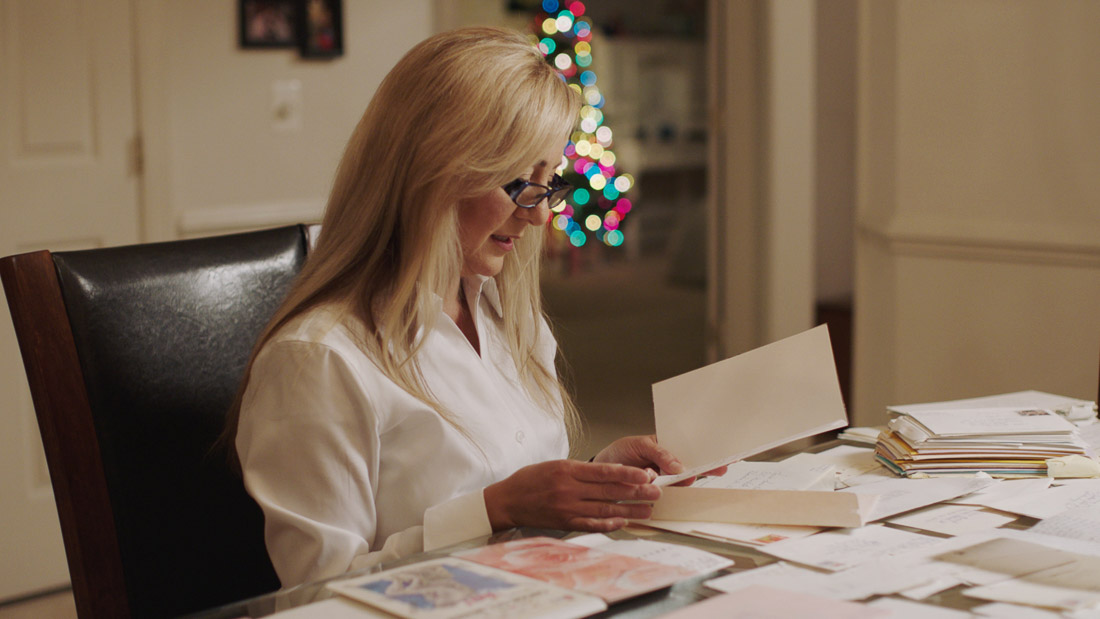The conversations around #MeToo have reawakened an interest in the stories of women and survivors of sexual abuse. In a short amount of time, the general public has become more likely to listen to these stories than mock or outright deny them. Sharing these stories have become less taboo as article after article has looked at sexual harassment across restaurants, factory floors, and newsrooms. Some of the most talked-about documentaries in the last few months are reexaminations of the Michael Jackson and R. Kelly cases. In Joshua Rofé‘s doc series, Lorena, there are no celebrities (at least, not at first) and it is not a collection of various experiences. It’s the story of one woman, who in her desperation to leave an abusive relationship, became the target of comedians and pundits, a touchstone for the ’90s culture wars and whose story shed a light on a still overlooked epidemic.
Executive produced by Jordan Peele, Lorena, is an extensive four-part documentary on the case of Lorena and John Wayne Bobbitt. Each party has their chance to tell their side regarding the night Lorena cut off her husband’s penis and later, threw it out her car window. The documentary then compiles the testimonies of the doctors who treated her husband, the police and investigators who collected the evidence, the team of lawyers who still argue against the opposing side and the family, friends, and neighbors who knew the couple then. Then, the series takes another step back for a wider look at the cultural and political atmosphere at that time – of how terribly underfunded resources were for survivors of spousal abuse, the frustration of the Anita Hill case, the tragedy of Nicole Brown Simpson’s story, and how the Bobbitt case touched a nerve in the women’s movement against sexual assault and abuse.
And while the documentary fully explores these many intersecting pieces, there’s one aspect of Lorena’s case that I wished were discussed more. Before she was a late-night punchline, Lorena Bobbitt immigrated from Ecuador, hoping to achieve the American Dream. When she first arrived in the United States, she stayed with family friends, and her family was back in South America. Eventually, a girlfriend brought her to an event where she met the Marine who would become her husband. Because Lorena came to this country without her family, it left her isolated and without shelter or safety that a family could provide in case of an emergency. It also left her vulnerable to exploitation by others, like how Lorena’s nail salon boss, Janna Bisutti, negotiated contracts to financially benefit herself.
Lorena’s story is not just one of domestic abuse, it’s also how citizenship status may affect those who need to escape abusive relationships. John Wayne Bobbitt so dug into the power imbalance between citizen and immigrant, that he threatened Lorena with immigration services if she reported his abuse. Near the end of the documentary, he loosely equates her efforts for a green card as a form of gold digging. Even years after the events of the incident and trial, he wrote her a message about how much he still loves her and that he thought her affections were true. “I know it wasn’t just for the citizenship,” he wrote Lorena in a Facebook message.

Lorena’s case is not new, but it’s certainly not a thing of the past. In 2017, The New York Times reported a sizable decrease in reports of domestic violence in Latino communities, positing that the decrease may be tied to increased fears of deportation after the 2016 election. According to the article, reports of rape by Latino victims were down 40 percent in Houston and reports of sexual assault went down 25 percent in Los Angeles. In El Paso, one woman was arrested by ICE after requesting a protective order against her abuser.
Lorena’s ex-husband and abuser may have exploited her immigration status as a way to belittle and terrorize her, but the local Latin American immigrant community mobilized. Spanish-language radio stations broadcast Lorena’s stories, and other immigrants connected to Lorena’s isolation and the legal precariousness of becoming a citizen. Supporters took buses from several towns over and offered carpools so they could rally, chant and pray for her outside the courthouse.
As Lorena explains in an interview, should she have been convicted of a felony, she would have been ineligible to apply for citizenship and that might have started the process for her deportation. She and other witnesses testified that her actions were a desperate attempt to escape abuse, and the jury agreed with her plea that it was an act out of irresistible impulse (or, temporary insanity as other states call it). Lorena Bobbitt then spent 45 days in a mental hospital, where she wrestled with Catholic guilt and post-traumatic stress disorder. She survived the experience, returning to her maiden name, Gallo, went back to school, helped bring her family to the United States, and became an advocate for other survivors of domestic abuse.
At the end of the documentary, it’s clear that Lorena has moved on from that painful chapter of her life and has made something positive out of her heartbreaking situation. The same can not be said of John Wayne Bobbitt, whose lies, obsession on her, and history of subsequent abuse are laid out for the viewer to draw their own conclusion. He continues to deny that he abused her, or any other woman, while continuing to demean their actions. Then, Lorena brings out dozens of letters and cards that John has sent her over the years since the trial, some of which are multiple pages long. He still wants to control her, under the guise of love. Now that she’s found her voice, she has the power and security to tell him “just leave me alone!”
Lorena is currently streaming on Amazon.







